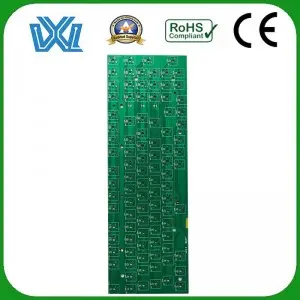With the widespread use of technology, e-waste has become a major global concern. Printed circuit boards (PCBs) are important components of electronic devices, and their improper disposal can lead to environmental pollution. However, by adopting responsible habits and recycling PCB boards, we can contribute to a more sustainable future. In this blog, we’ll take a deep dive into the PCB board recycling process and explore how you can have a positive impact on the environment.
Learn about PCB boards
PCB boards are found in almost all the electronic devices we use every day, from mobile phones to computers and kitchen appliances. These boards connect various electronic components and act as the backbone of the device’s functionality. However, due to the complexity and composition of PCB boards, they can pose a threat to the environment if not disposed of properly.
recycling process
Recycling PCB boards requires a systematic approach to ensure maximum recovery of valuable materials and safe disposal of hazardous substances. The process usually involves the following steps:
1. Collection: First collect PCB boards from electronic waste to separate them from other components.
2. Classification: Classify the collected PCB boards according to their type and composition to facilitate subsequent processing stages.
3. Disassembly: The board is disassembled to separate the different components such as chips, resistors, capacitors and the PCB itself.
4. Circuit board recycling: PCB boards contain gold, silver, copper and other precious metals. Specialized techniques are used to extract these metals and recover their market value.
5. Safe disposal: Some materials found on PCBs, such as lead and mercury, may be harmful to the environment. Make sure to dispose of these substances properly according to local regulations.
Benefits of Recycling PCB Boards
Recycling PCB boards offers numerous environmental and economic benefits:
1. Resource Conservation: By recycling PCB boards, we reduce the need for new materials, thereby conserving valuable natural resources and minimizing mining activities.
2. Reduce pollution: Disposing of PCB boards in landfills or incineration facilities releases harmful substances into the air, soil and water. Recycling can mitigate these risks and prevent environmental pollution.
3. Economic Opportunity: The e-waste recycling industry can create jobs and promote economic growth, contributing to a more sustainable society.
Promote responsible e-waste disposal
In addition to recycling PCB boards, there are several steps individuals and organizations can take to promote responsible e-waste disposal:
1. Donate or sell electronics: If your electronics are still in working order, consider donating or selling them to extend their life.
2. E-waste collection schemes: Many countries have established e-waste collection centers or initiatives. Take advantage of these platforms to ensure proper disposal of your old equipment.
3. Consumer Awareness: Educate yourself and others on the importance of responsible e-waste disposal. Encourage friends and family to recycle their electronic devices.
in conclusion
Recycling PCB boards is an important step towards a sustainable future. By understanding the process and taking an active part in responsible e-waste disposal, we can minimize the harmful impact of e-waste on the environment. Let’s embrace the art of sustainable electronics, one recycled PCB board at a time.
Post time: Jul-21-2023

